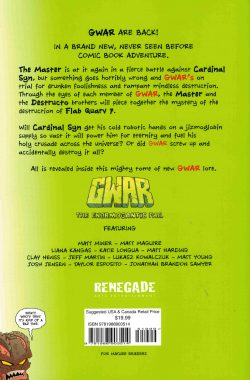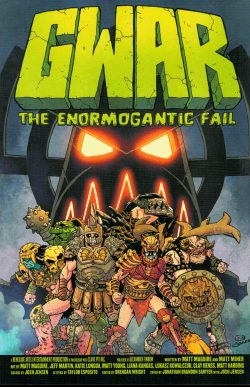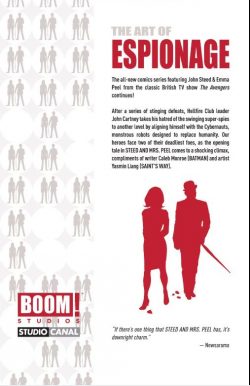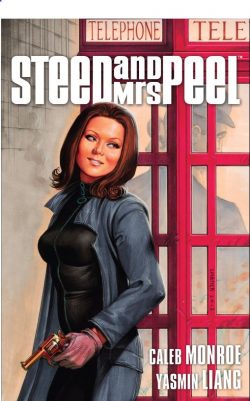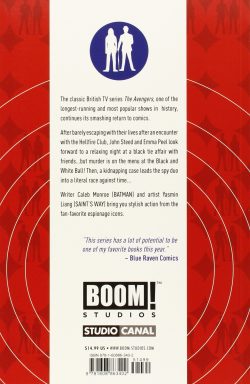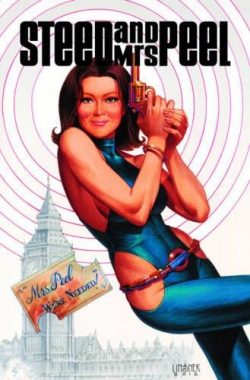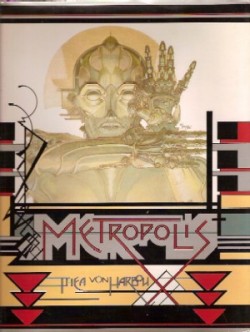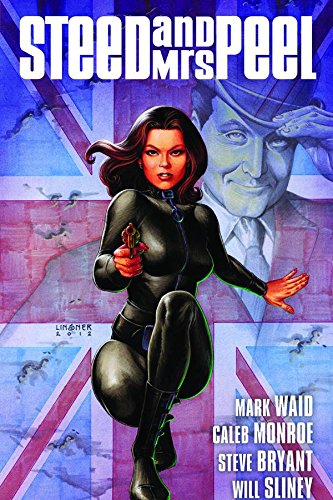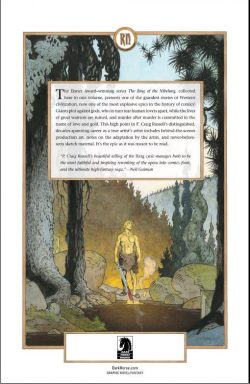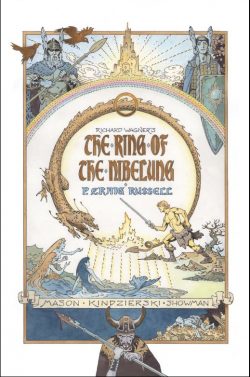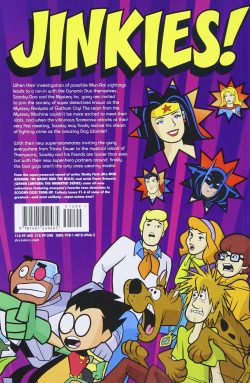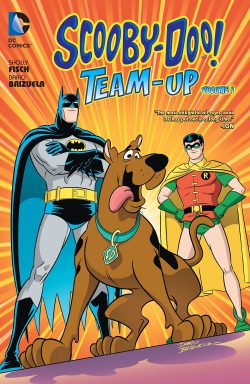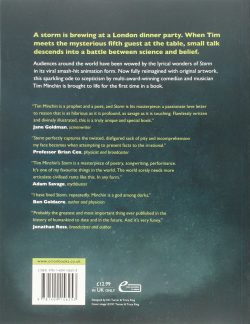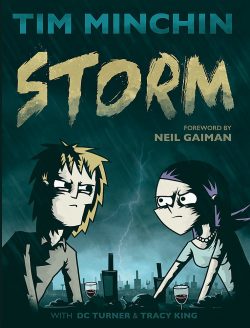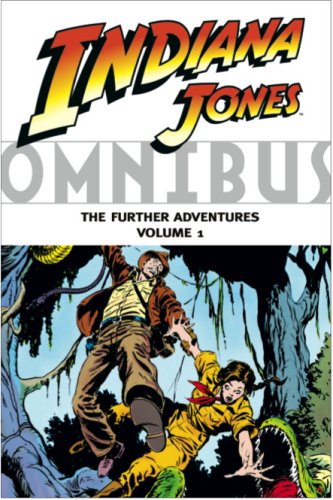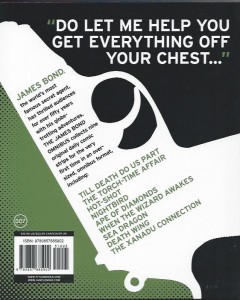
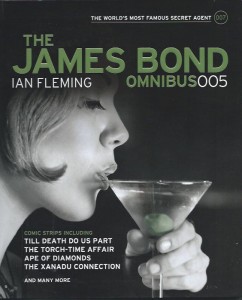
By Jim Lawrence & Yaroslav Horak (Titan Books)
ISBN: 987-0-85768-590-2 (PB)
Win’s Christmas Gift Recommendation: Still the Most Traditional Licence to Thrill… 9/10
I’ve just heard that one of the true cartooning greats has passed away. Yaroslav Horak (12th June 1927 – 24th November 2020) was a conics star in Australia for years before taking over James Bond in 1966: a unique stylist and gifted writer and painter too. For a full biography and appreciation, check out the wonderful downthetubes.net. You should be doing that anyway if you’re a lover of comics and related media.
As my own farewell and thanks, here’s an old review of one of the best examples of Horak’s work, still readily accessible through online vendors. Your actions will be well rewarded…
There are very few British newspaper strips to challenge the influence and impact of classic daily and Sunday “funnies†from America, especially in the field of adventure fiction. The 1930’s and 1940’s were particularly rich in popular, not to say iconic, creations. You would be hard-pressed to come up with home-grown household names to rival Popeye, Dick Tracy, Buck Rogers, The Phantom, Mandrake the Magician, Flash Gordon or Steve Canyon, let alone Terry and the Pirates or the likes of Little Lulu, Blondie, Li’l Abner, Little Orphan Annie or Popeye – and yes, I know I cited him twice, but Elzie Segars’s Thimble Theatre was funny as well as thrilling, constantly innovative, and really, really good.
What can you recall for simple popularity let alone longevity or quality in Britain? Rupert Bear? Absolutely. Giles? Technically, yes. Nipper? Jane? The Perishers? Garth?
I hope so, but doubt it.
The Empire didn’t quite get it until it wasn’t an empire any more. There were certainly very many wonderful strips being produced: well-written and beautifully drawn, but that stubborn British reserve just didn’t seem to be in the business of creating household names… until the 1950’s.
Something happened in ‘fifties Britain – but I’m not going to waste any space here discussing it. It just did.
In a new spirit that seemed to crave excitement and accept the previously disregarded, comics (as well as all entertainment media from radio to novels) got carried along on the wave. Eagle, the regenerated Dandy and Beano, girls’ comics in general: all shifted into creative high gear, and so did newspapers. And that means that I can go on about a graphic collection with proven crossover appeal for a change.
The first 007 novel Casino Royale was published in 1953 and subsequently serialised in the Daily Express from 1958, beginning a run of paperback book adaptations scripted by Anthony Hern, Henry Gammidge, Peter O’Donnell and Kingsley Amis before Jim Lawrence, a jobbing writer for American features (who previously scripted the aforementioned Buck Rogers) came aboard with The Man With The Golden Gun to complete the transfer of the Fleming canon to strip format, thereafter being invited to create new adventures, which he did until the strip’s ultimate demise in 1983 – all apparently thanks to the striking effects of his artistic collaborator.
The art on the feature was always of the highest standard. Initially John McLusky provided illustration until 1966’s conclusion of You Only Live Twice and, although perhaps lacking in verve, the workmanlike clarity of his drawing easily coped with the astonishing variety of locales, technical set-ups and sheer immensity of cast members, whilst serving the then-novel conceit of advancing a plot and ending each episode on a cliff-hanging “hook†every day.
He was succeeded by Yaroslav Horak, who also debuted on …Golden Gun with a looser, edgier style; at once more cinematic and with a closer attention to camera angle and frenzied action that seemed to typify the high-octane 1960’s.
Horak was born in Manchuria in 1927, of Russian/Czech descent and the family relocated to Australia before WWII. Artistic from the start, Horak worked as a portraitist and magazine illustrator before moving into the nation’s vibrant comics industry in 1947. Following years of success and even some controversy from high-minded busybodies, the writer/artist moved over to newspaper strips in the 1950’s before emigrating to England in 1962. Even after landing the 007 gig he maintained links “Downunderâ€, carrying on with ‘Mike Steel – Desert Rider’ for Women’s Day until 1969. His pre-Bond UK output includes a selection of War and Battle Picture Library stories, and serial strips for DC Thomson’s The Victor and The Hornet.
In 1975, he returned to Australia, continuing the super-spy’s exploits while crafting homegrown features such as Cop Shop and Andea. We’ll not see his like again…
Titan books have re-assembled the heady brew of adventure, sex, intrigue and death into a series of addictively accessible monochrome Omnibus editions and this fifth compilation finds the creators on top form as they reveal how the world’s greatest agent never rests in his mission to keep us all free, safe and highly entertained…
The James Bond Omnibus gathers the series’ frantic derring-do and dark, deadly diplomacy in fabulous monochrome editions and this one commences with ‘Till Death Do Us Part’, which first ran in the Daily Express from July 7th to October 14th 1975. Solidly traditional 007 fodder, it found Bond assigned to kidnap/rescue Arda Petrich, comely daughter of a foreign asset, and keep vital intelligence out of the hands of the KGB.
This pacy thriller is most notable more for the inevitable introduction of the eccentric gadgets which had become an increasingly crucial component of the filmic iteration than for the actual adventure, but there are still racy thrills and icy chills aplenty on view.
Hard on the heels of that is brief but enthralling encounter ‘The Torch-Time Affair’ (October 15th 1975 – January 15th1976), wherein the hunt for a record of all Soviet subversion in Latin America leads to bodies on the beach, a mountain of lies and deceit, breathtaking chases on roads and through jungles, plus an astonishingly intriguing detective mystery as Bond and female “Double-O†operative Susie Kew must save the girl, get the goods and end the villain.
But, which one…?
‘Hot-Shot’ (January 16th – June 1st) finds the unflappable agent assisting Palestinian freedom fighter Fatima Khalid as she seeks to restore her people’s reputation for airline atrocities actually committed by enigmatic Eblis terrorists. Their cooperative efforts uncover a sinister Indian billionaire behind the attacks before Bond recognises an old enemy at the heart of it all… Dr. No!
In ‘Nightbird’ (2nd June – 4th November) sporadic attacks by what appear to be alien invaders draw Bond into a diabolical scheme by a cinematic genius and criminal master of disguise apparently in search of military and political secrets and weapons of mass destruction. However, a far more venal motive is the root cause of the sinister schemes and reign of terror…
Despite surreal trappings, ‘Ape of Diamonds’ (November 5th 1976 – January 22nd 1977) is another lethally cunning spy exploit as a deadly maniac uses a colossal and murderous gorilla to terrorise London and kidnap an Arab banker, leading Bond to a financial wild man determined to simultaneously destroy Britain’s economic prosperity and steal the Crown Jewels. Happily for the kingdom, Machiavellian Rameses had completely underestimated the ruthless determination of James Bond…
‘When the Wizard Awakes’ finds bad guys employing supernatural chicanery, when the body of a Hungarian spy – dead for two decades – walks out of his tomb to instigate a reign of terror that eventually involves S.P.E.C.T.R.E., the Mafia and the KGB until the British Agent unravels the underlying plot…
In 1977 the Daily Express ceased publication of the Bond feature and the tale was published only in the Sunday Express(from January 30th -May 22nd 1977). Later adventures had no UK distribution at all, only appearing in overseas editions. This state of affairs continued until 1981 when another British newspaper – the Daily Star – revived his career. Presumably, we’ll deal with those cases in another volume.
The first of those “lost†stories are included here, however, beginning with ‘Sea Dragon’, produced for European syndication: a maritime adventure with geo-political overtones wherein crazed billionairess and scurrilous proponent of “women’s liberation†Big Mama Magda Mather tried to corner the World Oil market using sex, murder and a deadly artificial sea serpent.
In ‘Death Wing’ Bond is needed to solve the mystery of a new and deadly super-weapon employed by the Mafia for both smuggling contraband and assassination. Despite a somewhat laborious story set-up, once the tale hits its stride, the explosive end sequence is superb as the undercover agent becomes a flying human bomb aimed at the heart of New York City. His escape and subsequent retaliation against eccentric hit-man Mr. Wing is an indisputable series highpoint.
This astounding dossier of espionage exploits ends with ‘The Xanadu Connection’ (1978) as the daring high-tech rescue of undercover agent Heidi Franz from East Germany inexorably leads Bond down a perilous path of danger and double-cross.
When Bond is tasked with safeguarding the wife of a British asset leading resistance forces in Russian Turkestan, the mission inevitably leads 007 to the Sino-Soviet hotspot where he is embroiled in a three-sided war between KGB occupation forces, indigenous Tartar rebels and their ancestral enemies of the Mongol militias led by insidious, ambitious spymaster Kubla Khan.
Deep in enemy territory with adversaries all around him, Bond is hardly surprised to discover that the real threat might be from his friends and not his foes…
Fast, furious action, masses of moody menace, sharply clever dialogue and a wealth of exotic locales and ladies make this an unmissable adjunct to the Bond mythos and a collection no fan can do without. After all, nobody does it better…
© 1975, 1977, 1977, 1978, 2013 Ian Fleming Publications Ltd/ Express Newspapers Ltd. All rights reserved.
